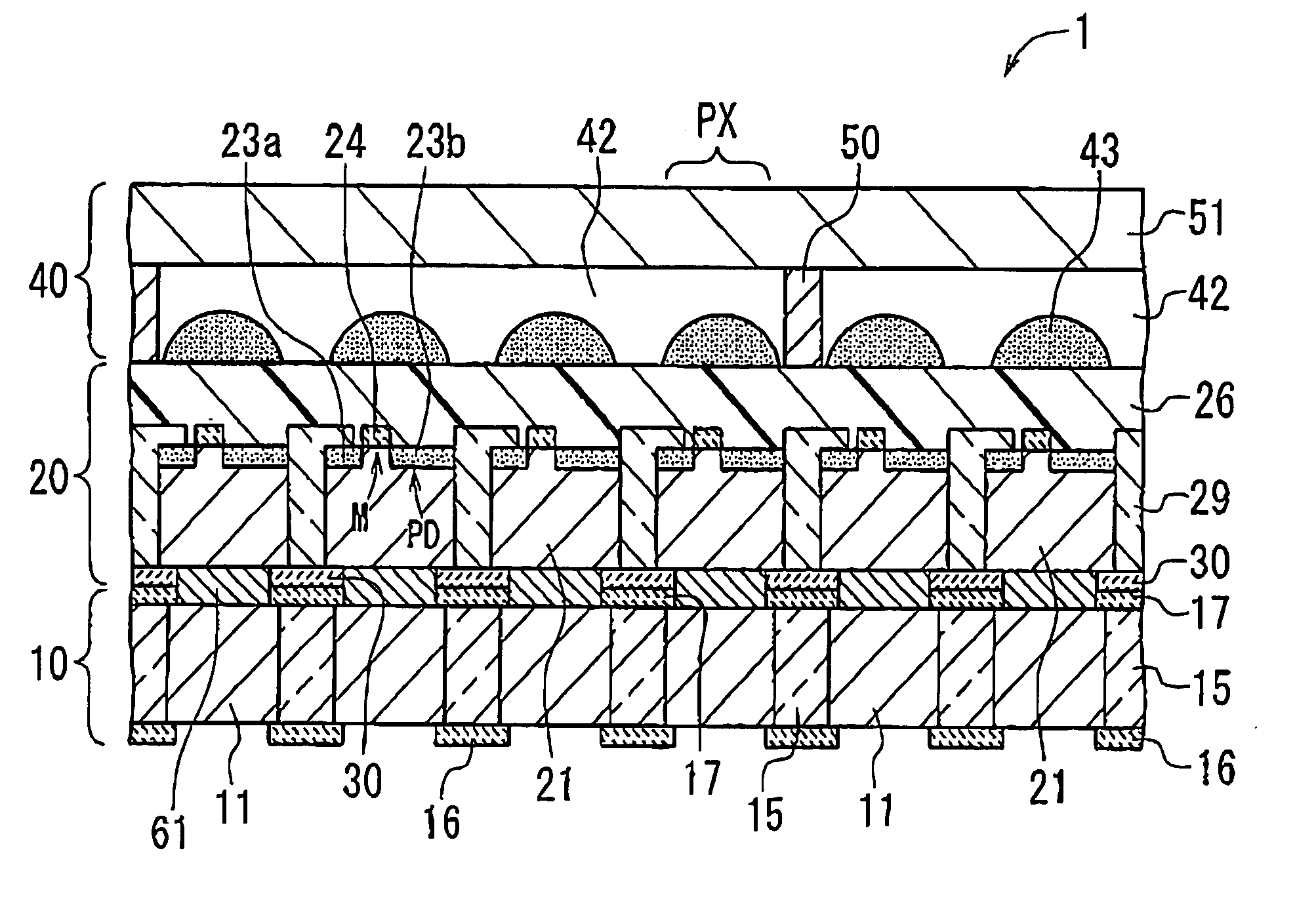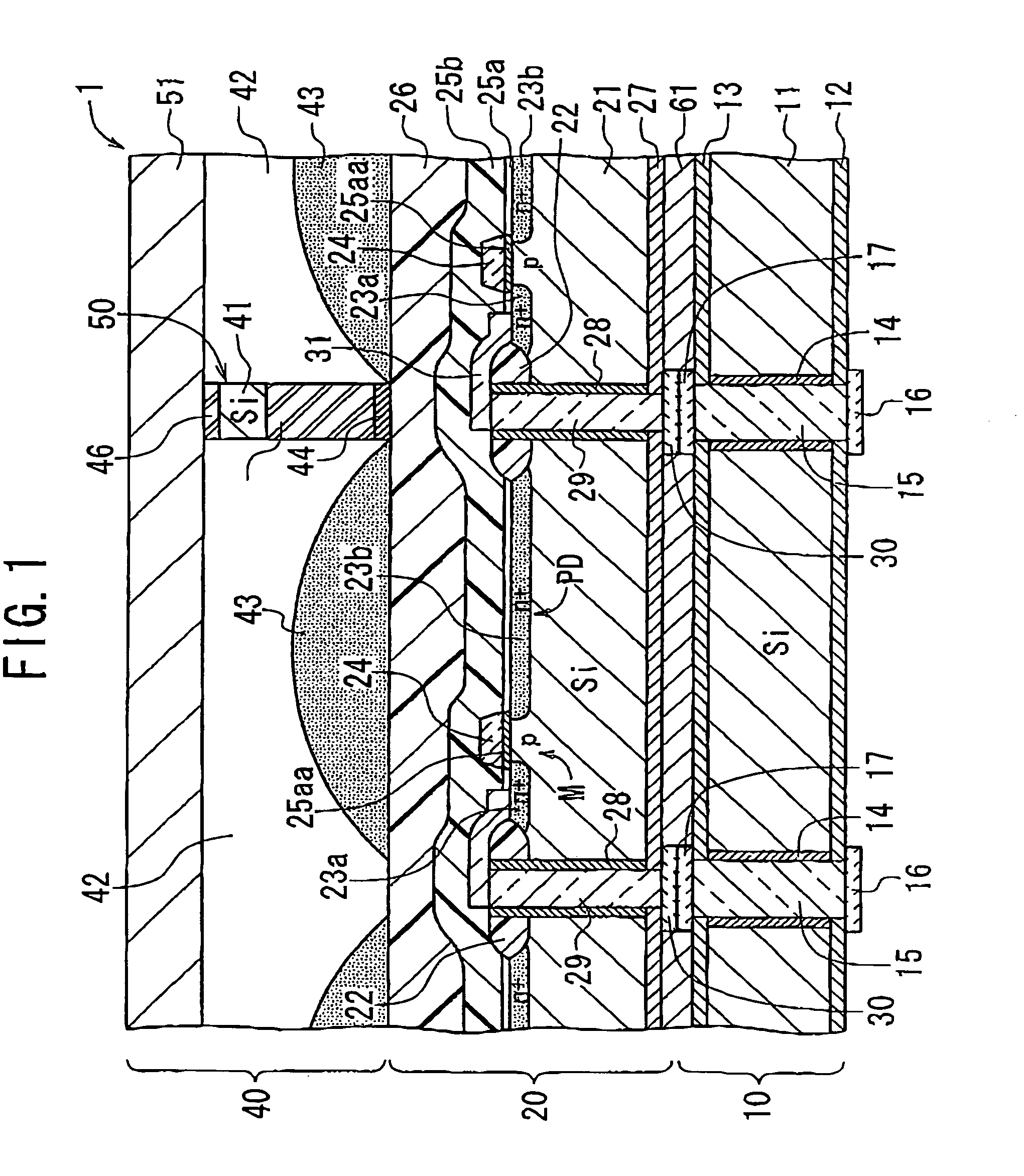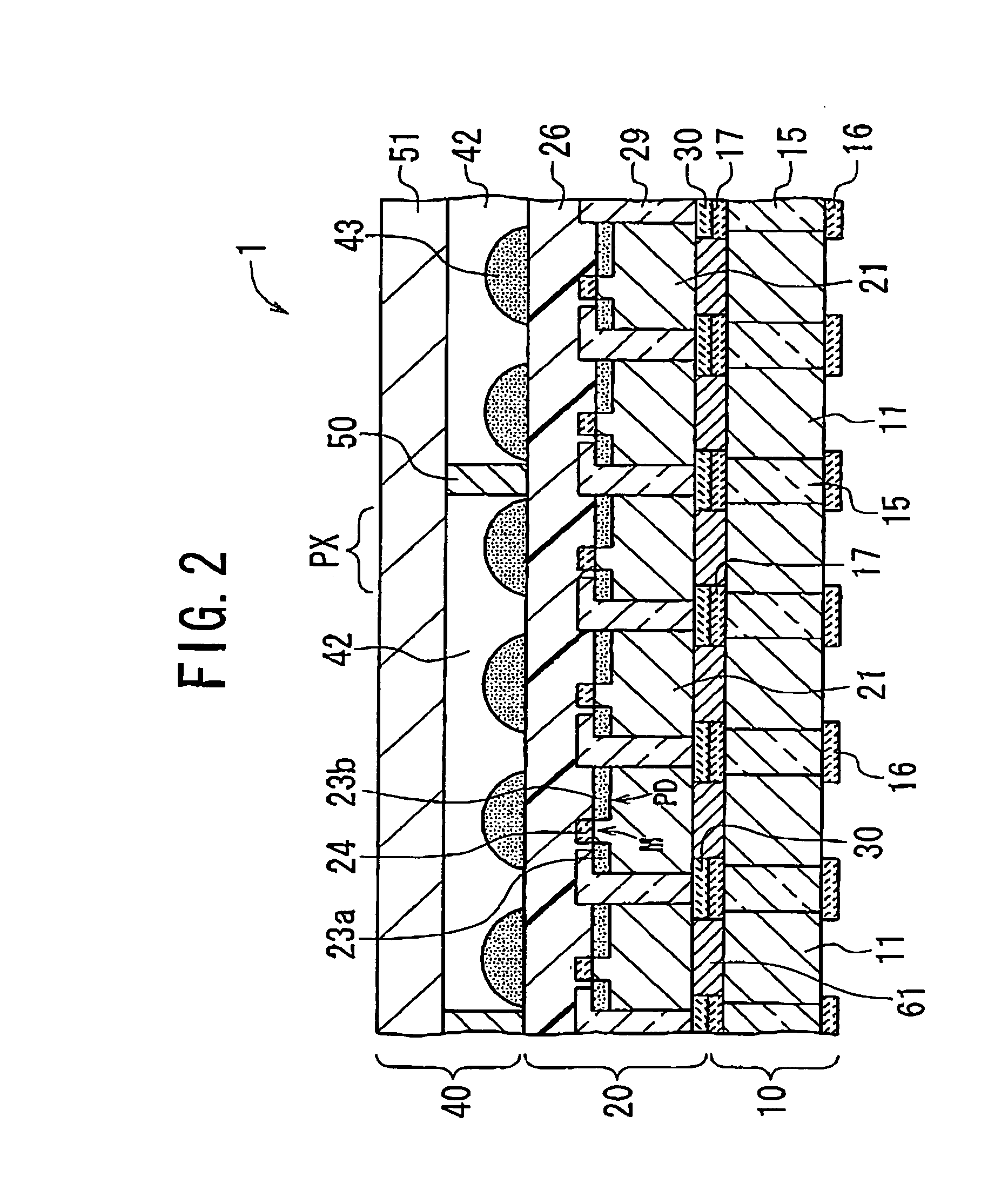Solid-state image sensor and its production method
- Summary
- Abstract
- Description
- Claims
- Application Information
AI Technical Summary
Benefits of technology
Problems solved by technology
Method used
Image
Examples
first embodiment
[0126] Configuration of Solid-State Image Sensor
[0127]FIG. 2 is a partial, cross-sectional view showing the configuration of a main part of a solid-stage image sensor 1 according to a first embodiment of the invention, and FIG. 1 is a partial, enlarged cross-sectional view of the sensor 1.
[0128] As shown in FIGS. 1 and 2, the solid-state image sensor 1 has a three-layer structure comprising an output layer 10, a light-receiving element layer 20, and a light-introducing layer 40. The sensor 1 has pixel regions PX arranged in a matrix array. The sensor 1 picks up an image and converts it to electric signals in all the pixel regions PX and thereafter, outputs the electric signals. Each pixel region PX has a rectangular plan shape in this embodiment; however, needless to say, it may have any other plan shape, such as circular or hexagonal one.
[0129] The light-introducing layer 40 picks up light from an image located outside the image sensor 1 (i.e., an external image) and sends the l...
second embodiment
[0201]FIG. 14 shows the configuration of a solid-state image sensor 1A according to a second embodiment of the invention.
[0202] The image sensor 1A corresponds to one obtained by shifting the switching MOS transistors M to the output layer 10 from the light-receiving element layer 20 in the image sensor 1 according to the first embodiment. The other configuration of the sensor 1A is the same as the sensor 1. Therefore, explanation about the same configuration is omitted by attaching the same reference symbols as those used in the sensor 1 of the first embodiment to corresponding elements in FIG. 14.
[0203] As shown in FIG. 14, the image sensor 1A has a three-layer structure like the image sensor 1 of the first embodiment.
[0204] In the light-receiving element layer 20′, a n+-type diffusion region 23 is formed in each of the element-formation regions formed in the p-type single-crystal Si substrate 21. That is, only a photodiode PD is formed in each element-formation region. The sen...
third embodiment
[0217]FIG. 15 shows the configuration of a solid-state image sensor 1B according to a third embodiment of the invention.
[0218] The sensor 1B corresponds to one obtained by providing light-receiving MOS transistors (i.e., phototransistors) M′ in the light-receiving element layer 20″ instead of the photodiodes PD in the solid-state image sensor 1A according to the second embodiment of FIG. 14. The other configuration of the sensor 1B is the same as the sensor 1A. The structure of the transistors M′ of the layer 20″ is substantially the same as that of the transistors M of the output layer 10″.
[0219] As shown in FIG. 15, the image sensor 1B has a three-layer structure as well. In the light-receiving element layer 20″, a pair of source / drain regions 23a and 23b is formed in each of the element-formation regions formed on the lower side of the single-crystal Si substrate 21. The sensor 1B is different from the sensors 1 and 1A according to the second and third embodiments at this point...
PUM
 Login to View More
Login to View More Abstract
Description
Claims
Application Information
 Login to View More
Login to View More - R&D
- Intellectual Property
- Life Sciences
- Materials
- Tech Scout
- Unparalleled Data Quality
- Higher Quality Content
- 60% Fewer Hallucinations
Browse by: Latest US Patents, China's latest patents, Technical Efficacy Thesaurus, Application Domain, Technology Topic, Popular Technical Reports.
© 2025 PatSnap. All rights reserved.Legal|Privacy policy|Modern Slavery Act Transparency Statement|Sitemap|About US| Contact US: help@patsnap.com



